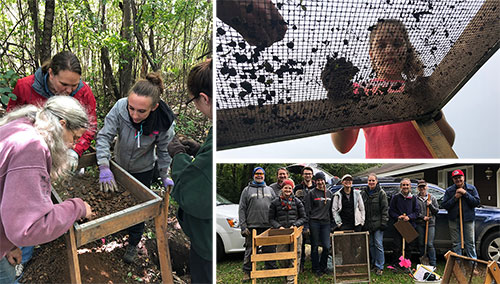Public Archaeology Fieldwork
To conduct archaeological research and analysis with public involvement and educational programming in the two partner counties.
 Partners: Dakota County Historical Society, Ramsey County Historical Society, Scott County Historical Society
Partners: Dakota County Historical Society, Ramsey County Historical Society, Scott County Historical Society
Partners hired an archaeologist to conduct Phase I Archaeological Fieldwork at two sites in each county with public involvement and programming. The hired archaeologist will also complete a comparative analysis of findings. As a result, the result was the creation of reports and video updates through the public fieldwork. Each report was added to each organization's collection, making it accessible for future research and review. Additionally, the videos are available to watch and better understand each county's history. Lastly, it allowed our organizations to create a body of analysis that can be used in future projects.
Visit https://www.mnhs.org/about/leadership
$2,000,000 each year is for partnerships involving multiple organizations, which may include the Minnesota Historical Society, to preserve and enhance access to Minnesota's history and cultural heritage in all regions of the state.
Available upon request. Contact:grants@mnhs.org
We believe our measurable outcomes were achieved. Each of our outcomes was based upon furthering the partners' understanding of the archaeological significance in their own history. Our short-term goal was to gain a better understanding in general and this was achieved as the work was completed and the reports filed. Each report outlines the significance of the site(s) where the work was conducted and provides the history and details of the work completed. This helps broaden the understanding we have / had of those sites.
Our intermediate goal was to use the information gained during this project for future projects. This was successful as each partner organization has already began attempting to find ways to use this information in the future. Whether it's for future fieldwork, or to give a better understanding of their own collection, this information will be invaluable moving forward. It also helps each partner have more information for future research requests.
Laslty, this project was to compare data from each organization. This was conducted and the archaeologist provided a document (in attachments) that outlines the process, a map of where analyzed artifacts came from and the conclusions drawn from the analysis work. This will help give us a better understanding as to what sort of connections might be present between the different regions for materials used, etc.
Available upon request, grants@mnhs.org


